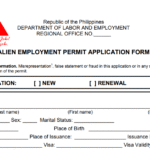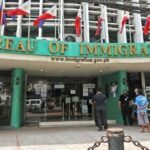Whether you’re planning a short vacation, pursuing work, or investing in a business venture, choosing the right visa is the first step in staying legally in the Philippines. The country offers a wide range of visa options tailored to different purposes and durations of stay. Read more to discover the different visa options, basic requirements, and their primary purpose.
Understanding the Different Types of Philippine Visas
The Philippines issues several types of visas, depending on the purpose of entry. These are generally grouped into the following categories:
- Tourist Visas 9(a) – For leisure travel or short-term visits; initially valid for 30 to 59 days and extendable up to 36 months for most nationalities.
- Work/Employment Visas 9(g), PEZA, etc. – These are for foreign nationals employed by Philippine-based companies. They are typically valid for 1 to 3 years and are renewable based on continued employment.
- Student Visas 9(f)—These are for foreign nationals enrolled in accredited Philippine educational institutions. They are usually valid for one year and renewable annually.
- Investor/Business Visas SIRV and SVEG – For entrepreneurs and investors establishing operations in the country. They may be granted indefinite validity as long as investment or employment conditions are maintained.
- Retirement Visas (SRRV) – Designed for foreign retirees wishing to settle long-term in the Philippines. This grants an indefinite stay with annual reporting requirements.
Each category comes with its own set of qualifications, documentation requirements, and processing timelines.
Factors to Consider When Choosing a Visa
Selecting the right visa depends on multiple factors, including:
- Purpose of Stay: Are you visiting for tourism, employment, study, investment, or retirement?
- Length of Stay: Will you be in the Philippines for a few weeks, months, or indefinitely?
- Nationality: Some countries have visa-free agreements or simplified entry processes with the Philippines.
- Planned Activities: Certain visas are limited to specific activities. For example, a tourist visa does not allow any form of employment.
- Long-Term Intentions: If you plan to stay longer or apply for residency later, choose a visa that aligns with your long-term goals.
Common Philippine Visas Arranged by Category
- Visa Options for Tourists and Short-Term Visitors
Foreign nationals visiting the Philippines for short stays have several entry options depending on their nationality and purpose:
-
- Visa-Free Entry
- Nationals from many countries can enter the Philippines without a visa.
- Ideal for casual tourists or those exploring short-term visits.
- 9(a) Tourist Visa
- For travelers who need or prefer to obtain a visa before arrival.
- Can be secured at a Philippine Embassy or Consulate.
- Strictly for leisure or non-work purposes.
- Visa-Free Entry
- Student visa 9(f)
-
- For foreign nationals enrolled in accredited Philippine schools at the elementary, secondary, tertiary, or graduate level.
- Requires a Notice of Acceptance (NOA), financial proof, and CHED, TESDA, or DepEd endorsements, depending on the education level.
- Valid for one year and renewable, but generally does not permit employment during your studies.
- Special Work Permit (SWP)
- For foreign nationals engaging in short-term employment or consultancy (typically less than 6 months). This isn’t a visa, but it allows you to work short-term in the Philippines even if you’re only here on a tourist visa.
- Does not require a 9(g) visa.
- Suitable for project-based work, speakers, artists, and temporary consultants.
- Must be sponsored by a Philippine-based entity.
These options provide flexibility for travelers or professionals on short assignments.
- Work and Business Visas in the Philippines
Foreign nationals who wish to work or do business in the Philippines must apply for the appropriate visa based on their employment or investment status. Common options include:
- 9(g) Pre-arranged Employment Visa
- For foreign nationals hired by a Philippine-based company.
- Requires company sponsorship and Department of Labor and Employment (DOLE) endorsement.
- Requires an Alien Employment Permit (AEP) from the DOLE.
- Includes submission of employment contracts, company registration documents, and other supporting paperwork.
- PEZA, BOI, and SEZ Visas
- For employees of companies registered with the Philippine Economic Zone Authority (PEZA), the Board of Investments (BOI), or a Special Economic Zone (SEZ). Requires that a registered company sponsor you.
- May offer streamlined processing. Requirements depend on the governing authority of your visa.
These visas are great for individuals planning to live and work in the country long-term and may serve as stepping stones toward permanent residency.
- Special Visas for Foreign Investors and Retirees
The Philippines actively welcomes foreign investment and retirement, offering special visas for long-term stay:
- Special Investor’s Resident Visa (SIRV) – For those who invest at least USD 75,000 in eligible businesses or government-approved projects.
- Special Resident Retiree’s Visa (SRRV) – Available to retirees aged 35 and up, this visa requires a time deposit or investment and allows an indefinite stay with multiple-entry privileges.
- Special Visa for Employment Generation (SVEG)
- Granted to foreign investors who directly employ at least 10 Filipino workers.
- Allows for an indefinite stay as long as employment conditions are maintained.
- Encourages local job creation and supports business sustainability.
These visas often come with benefits such as tax incentives, exemption from exit clearances, and long-term residency privileges.
General Requirements for a Philippine Visa
While specific requirements vary depending on the visa type, most applicants must prepare several core documents.
These typically include:
- A valid passport (with at least 6 months’ validity beyond intended stay)
- The appropriate visa application form
- Passport-sized photos taken within the last 6 months
- Proof of purpose (e.g., employment contract, school acceptance, investment documents, or travel itinerary)
- Proof of financial capacity (such as bank statements or income documents, typically for tourist or investor visas)
- NBI or BI clearance (for certain long-term or work visas)
- Alien Employment Permit (for most long-term work visas)
- Business Registration Documents (for work and investor’s visas)
- Medical examination results (if applicable)
Additional requirements may apply depending on your nationality or visa category. To avoid complications and delays, ensure your documents are complete, accurate, and with minimal discrepancies.
Final Thoughts
The Philippines offers a variety of visa options for both short-term visits and long-term stays, each designed to meet specific travel, work, study, or investment purposes. Choose the one that best fits your needs and matches your qualifications. If you’re unsure which visa suits your situation or need help with the application process, feel free to contact Work Visa Philippines for expert guidance.
Are You Applying for a Visa to Stay in the Philippines?
Let Work Visa Philippines guide you through the process. Our experienced lawyers help clients obtain suitable visas, proper permits, and other legal documents from the appropriate government agencies. We’ll make sure your requirements are complete so you can focus on enjoying your stay in the Philippines.
Reach out today and we’ll guide you every step of the way.
- Contact Us Here
- Fill Out the Form Below
- Call us at +63 (02) 8540-9623






